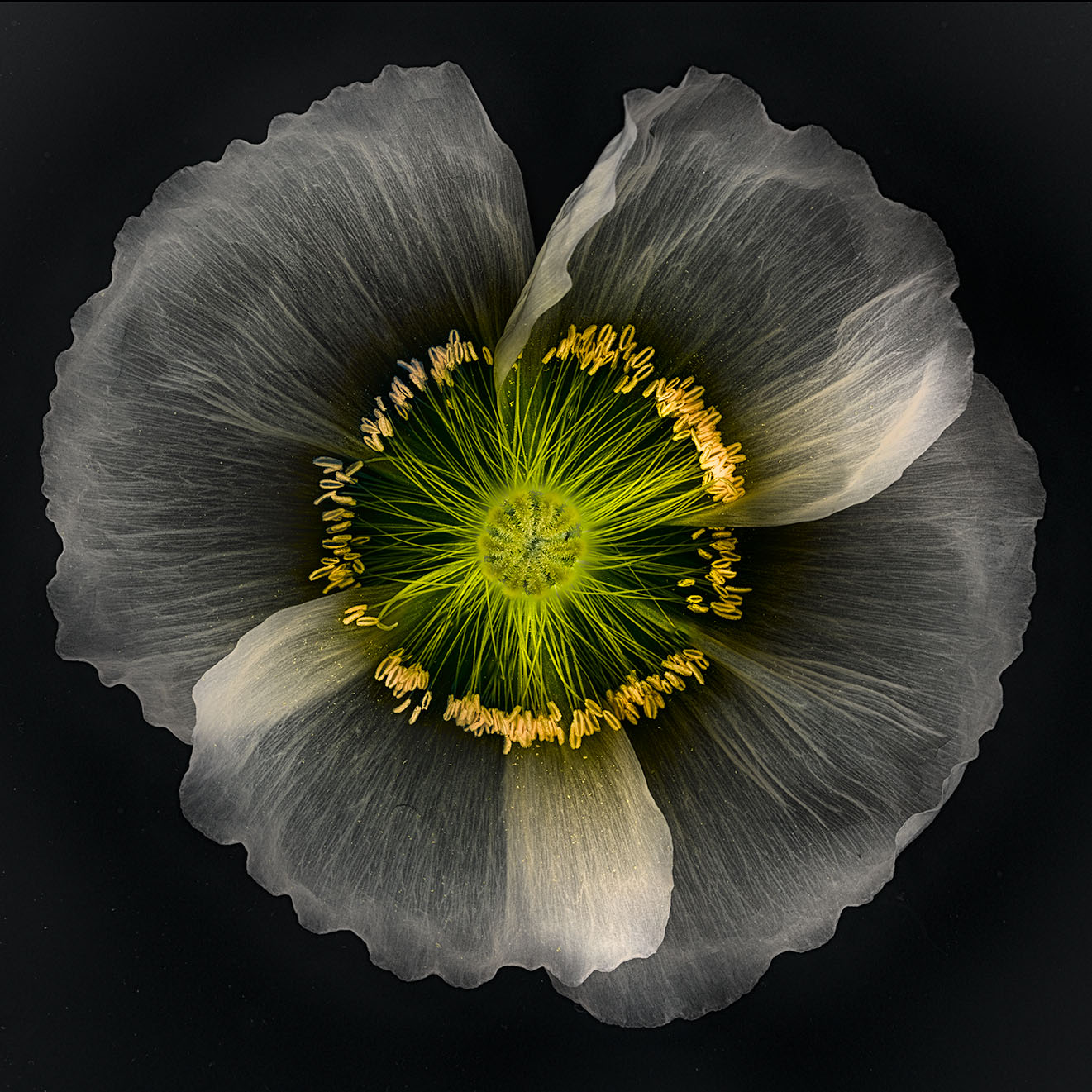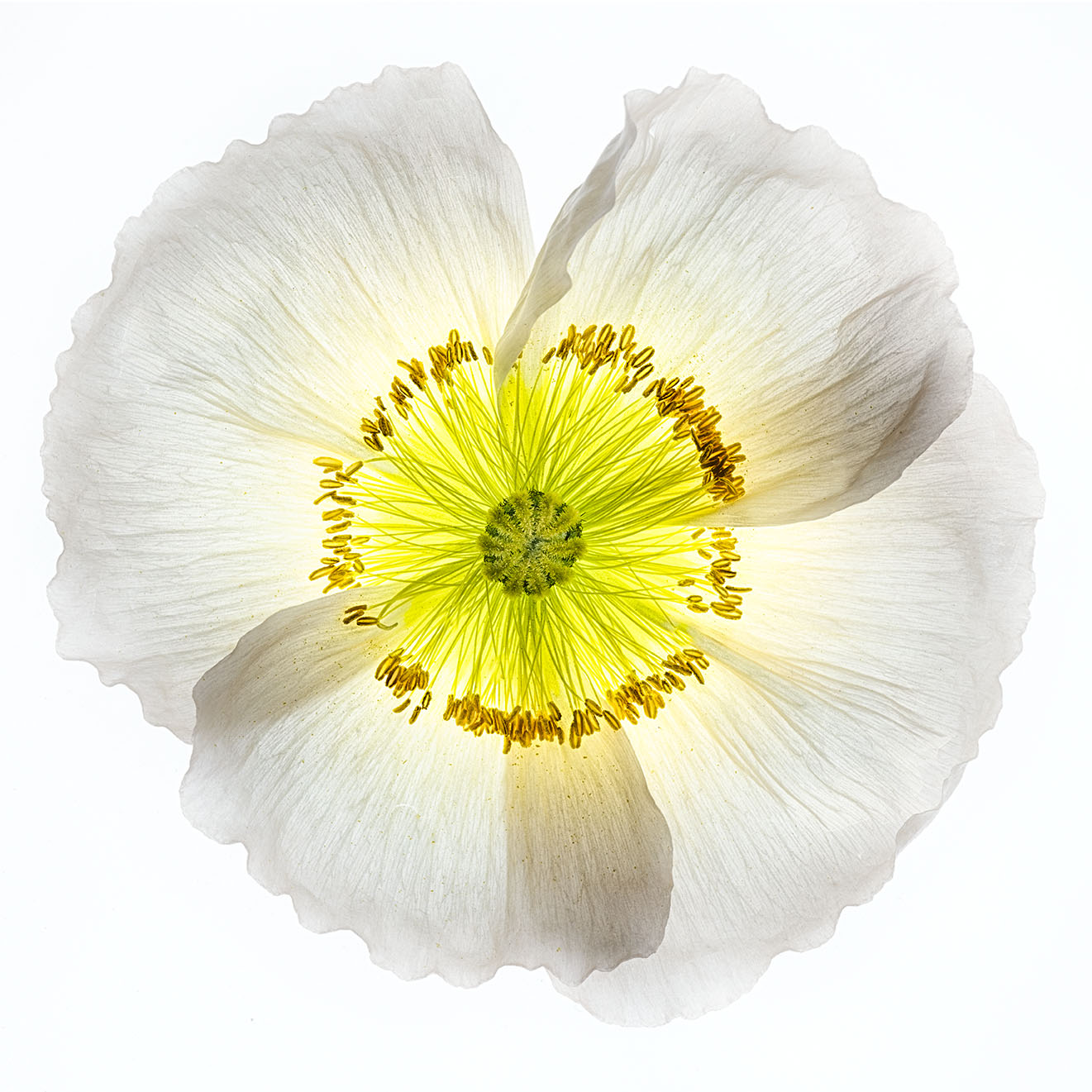
This is the spring of our discontent. Or at least the spring of isolating in place. As long as we are on Shakespeare near-quotations, “Sweet are the uses of adversity which, like the toad, ugly and venomous, wears yet a precious jewel in his head.”
In that spirit, keeping to our quarantined state has given me time to pursue projects I have long been putting off, like mastering video creation and leading remote webinars.
My garden is in glorious April bloom, and I have flowers to photograph. Like the white Papaver nudicaule (Icelandic poppy) shown in this story.

To make the image on white, I cut the flower and placed it on my light box. Making the exposure, I decided not to use a macro lens. I picked a great piece of glass, my Zeiss 135mm f/2 moderate telephoto lens. I have used this lens for this kind of composition with success before, for example in Matilija Poppies and Mallows. I added a 12mm extension tube between the lens and camera so I could focus closer.
I made six exposures with the camera on the tripod at shutter speeds between 1/13 of a second and 2.5 seconds. Each exposure was at f/22 and ISO 64. I processing the captures as a high-key layer stack in Photoshop.
With the final version on white processed, I decided to see what would happen using creative LAB color techniques, specifically an L-channel inversion. Since the L-channel inversion swaps white for blacks and black for whites, to some extent it will leave a fairly neutral mid-gray (such as this flower’s petals) close to untouched, while swapping the background colors.
I was pleasantly surprised at the results of the LAB L-channel swap (shown at the top of this story), followed by a few additional Photoshop tweaks.
Enjoy this time, and use it for staying creative!
Pingback: Harold Davis—Best of 2020